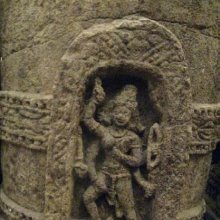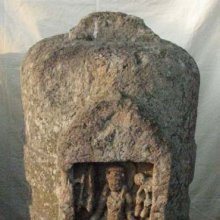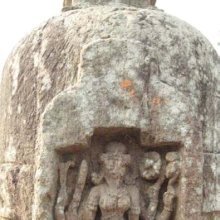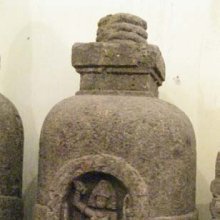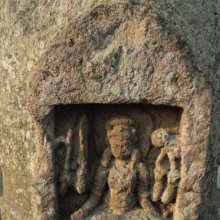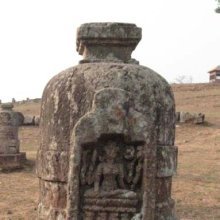Six: 1 definition
Introduction:
Six means something in Hinduism, Sanskrit. If you want to know the exact meaning, history, etymology or English translation of this term then check out the descriptions on this page. Add your comment or reference to a book if you want to contribute to this summary article.
Images (photo gallery)
(+870 more images available)
In Hinduism
Natyashastra (theatrics and dramaturgy)
Source: Shodhganga: Elements of Art and Architecture in the Trtiyakhanda of the Visnudharmottarapurana (natya)The number Six is associated with Haṃsapakṣa-hasta: one of the twenty-two Single-hand Gestures (in Indian Dramas) (known as asaṃyuktahastas), according to the Viṣṇudharmottarapurāṇa, an ancient Sanskrit text which (being encyclopedic in nature) deals with a variety of cultural topics such as arts, architecture, music, grammar and astronomy.—The word haṃsapakṣa denotes the wings of a swan. In the Viṣṇudharmottarapurāṇa, this hand posture is described as one where the little finger of the hand is lifted crookedly and the thumb is bent. [...] According to the Abhinayadarpaṇa, the number six is denoted by the haṃsapakṣahasta posture. Some activities like building of a bridge, putting nail marks and covering something are also indicated through this hand posture.

Natyashastra (नाट्यशास्त्र, nāṭyaśāstra) refers to both the ancient Indian tradition (shastra) of performing arts, (natya—theatrics, drama, dance, music), as well as the name of a Sanskrit work dealing with these subjects. It also teaches the rules for composing Dramatic plays (nataka), construction and performance of Theater, and Poetic works (kavya).
See also (Relevant definitions)
Starts with (+33): Six acts, Six auxiliaries, Six Bardos, Six chakras, Six Consciousness, Six Defilements, Six Desires, Six Destinations, Six Devalokas, Six Dusts, Six Elements, Six Entrances, Six External Bases, Six Fulfilment, Six Gunas, Six Indriyas, Six Internal Bases, Six Karmic Perceptions, Six nights, Six Obstacles.
Full-text (+6336): Shadanga, Shatka, Shadguna, Shadbhuja, Shadanana, Shanmasa, Vedanga, Shadgunya, Shanmasika, Satkarman, Shadvarga, Karttikeya, Chakka, Shadrasa, Shanmukha, Shadurmi, Shattrimshat, Shanmasya, Shatkaushika, Shaddarshana.
Relevant text
Search found 452 books and stories containing Six; (plurals include: Sixes). You can also click to the full overview containing English textual excerpts. Below are direct links for the most relevant articles:
Heimskringla (by Snorri Sturlson)
Part 97 - Meeting Of Reconciliation Between The Kings < [Chapter VII - Saga Of Olaf Haraldson]
Part 29 - The Armament Of Eirik's Sons < [Chapter IV - Hakon The Good's Saga]
Part 40 - The Burning In Upsal < [Chapter I - The Ynglinga Saga]
India’s Triumph < [April – June, 2008]
Atonement < [January 1965]
How Mothers Were Created < [April – June, 1998]
Abhidhamma in Daily Life (by Nina Van Gorkom)
Cetasikas (by Nina van Gorkom)
Chapter 13 - Introduction < [Part III - Akusala Cetasikas]
Chapter 30 - Equanimity < [Part IV - Beautiful Cetasikas]
Chapter 26 - Mindfulness < [Part IV - Beautiful Cetasikas]
A Survey of Paramattha Dhammas (by Sujin Boriharnwanaket)
Chapter 1 - The Scriptures And Their Commentaries < [Part 1 - General Introduction]
Chapter 21 - Roots < [Part 2 - Citta]
Appendix 2 - To Cetasika < [Appendix]
Letters from Nina (by Nina van Gorkom)
Related products
(+20 more products available)
